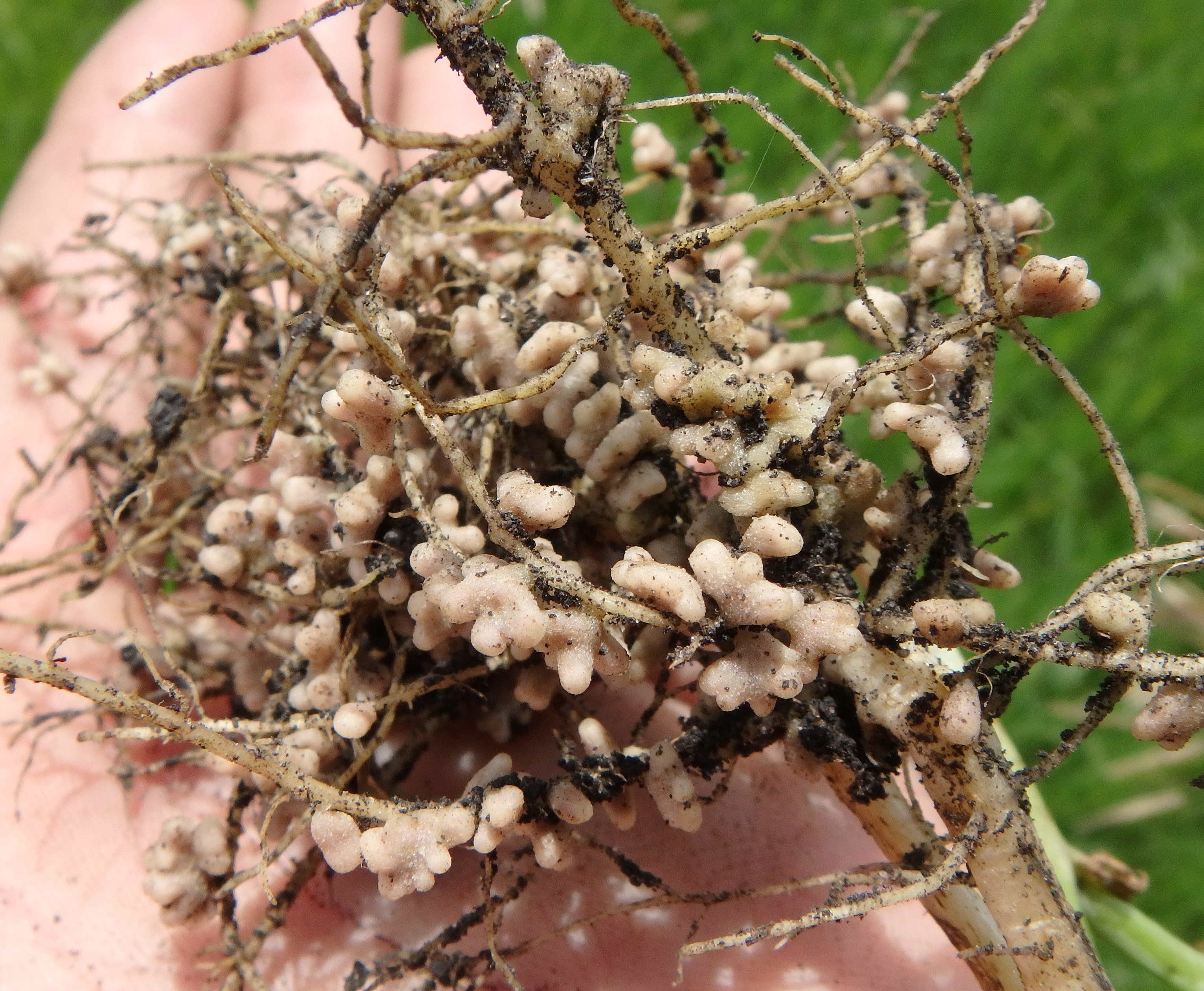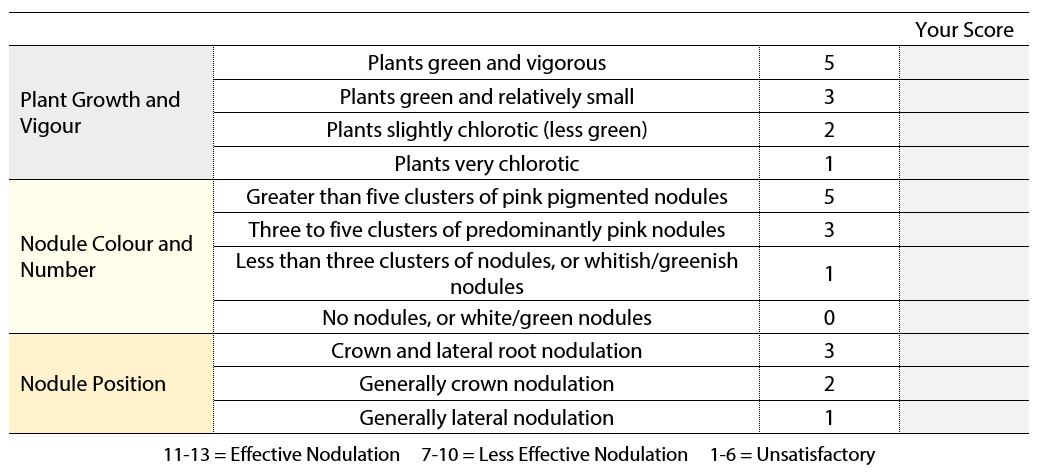Timing
Field pea root nodules can form as early as 14 days after emergence. However, proper nodulation assessment should take place from the 6th to 9th node stages or at R1 (flower bud) to capture peak nodulation.
Method
Peas have indeterminate nodules that have a cylindrical shape that tends to branch out as they develop. This branching makes pea nodules more difficult to count than other types of root nodules. As a result, a scoring system is used instead:
This branching makes pea nodules more difficult to count than other types of root nodules. As a result, a scoring system is used instead:
- Select 5-10 plants from 2-3 different areas that are representative of the field.
- Use a shovel to gently dig out each root system. Carefully wash the roots in a pail of water to remove soil, as nodules can easily be stripped from the lateral roots during extraction.
- Assess overall plant growth and vigour, count the number of nodule clusters per plant and note the position of nodule clusters on the plant, according to the worksheet below.
- Cut a few nodules open to assess the colour. If the nodules are pinkish-red inside, they are actively fixing N. Brown, white or green nodules are considered ineffective.
- Conduct nodule assessments on additional plants if there is a wide variation across locations and plants.
 Adapted from: 20/20 Seed Labs Inc.
Adapted from: 20/20 Seed Labs Inc.
What is considered adequate nodulation?
Peas have the ability to fix approximately 55% of their N requirement if they nodulate adequately. Following the previous nodulation scoring system:
- A score of 11-13 means effective nitrogen fixation and no action is required.
- A score of 7-10 means the pea crop is fixing N, but not enough to secure 55% of the total N requirement.
- A score of 1-6 means rescue N treatment is required. Re-evaluate the inoculation strategy used, including products and placement, and any potential environmental impact on nodulation efficacy.
Rescue Nitrogen Treatment
Rescue application in peas have not been well researched. If you have checked nodulation, found it to be insufficient, there are signs of N deficiency (yellowing of the lower leaves) and yield potential of the crop is good, then consider a rescue nitrogen application.
Peas remove 2.3 lbs N/bu in the seed, so additional N may be required for pod fill. We suggest applying 50 lbs N/ac at the 9-12 node stage before flowering so nitrogen is available for pod fill and for ease of getting the application through the crop canopy.
Apply as a granular form to avoid leaf scorch from liquid applications and apply so the granules fall through the pea canopy to the soil surface. Rain is necessary to move nitrogen into the soil – if applied without rain in the forecast consider using a urease inhibitor.
